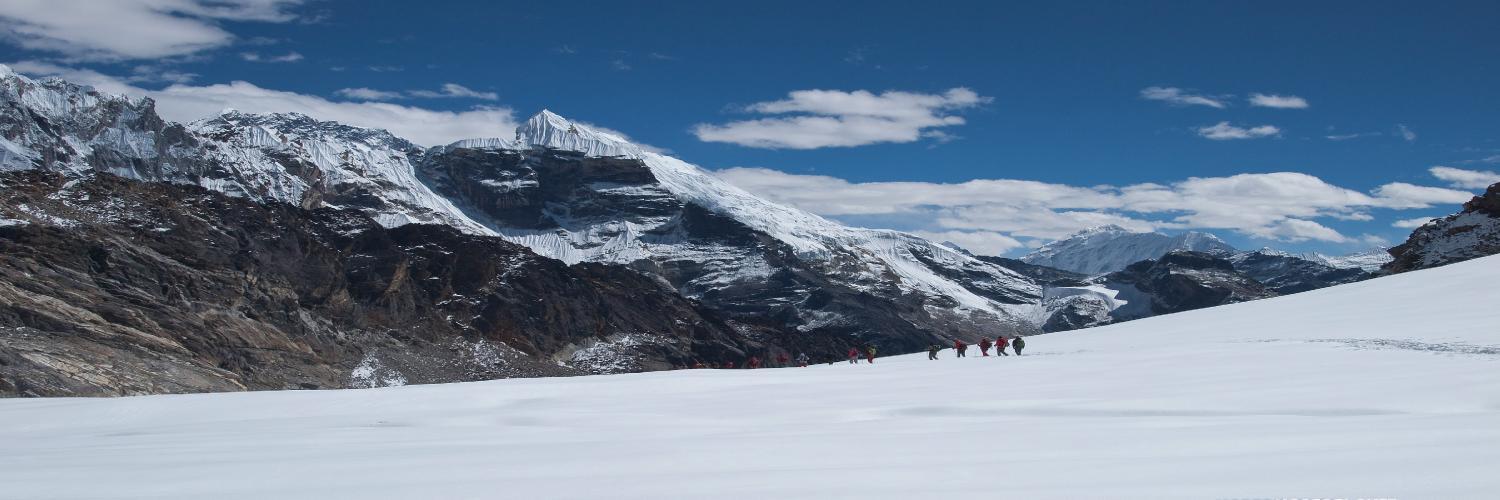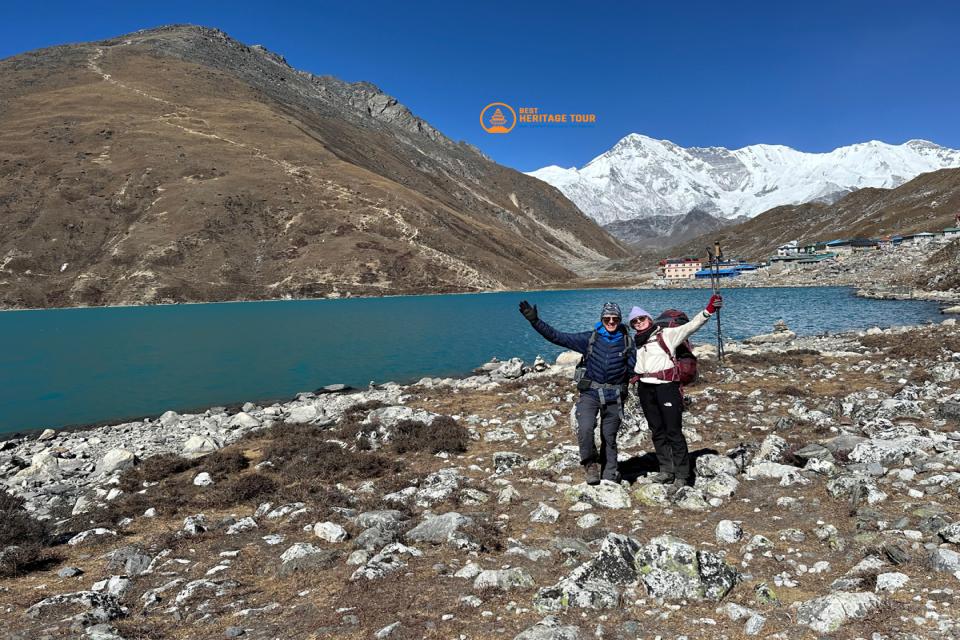The Chola Pass trek is one of the most adventurous and scenic trekking routes in Nepal. Connecting the Everest region with the Gokyo Valley, it takes you through stunning glaciers, alpine lakes, Sherpa villages, and challenging high-altitude terrain.
One of the most common questions trekkers ask is: “Do I really need crampons for Chola Pass?”
The answer isn’t always straightforward. Depending on the season, weather, and your trekking experience, crampons can be a critical piece of gear - or occasionally unnecessary. In this blog, we’ll break down the terrain, seasonal conditions, risks, and practical tips, so you can decide whether to pack crampons for your Chola Pass adventure.
Understanding the Chola Pass Trek
-
Altitude: 5,420 meters (17,782 ft) at Chola Pass.
-
Route Highlights: Lukla → Namche Bazaar → Dole → Thagnak → Chola Pass → Gokyo Lakes → Everest Base Camp.
-
Terrain: The trek includes moraine paths, glaciers, rocky trails, and snow-covered slopes, especially at higher altitudes.
Because the pass traverses glaciers and snowfields, trekkers face icy and slippery conditions, which is why the question of crampons is critical.
What Are Crampons?
Crampons are metal spikes attached to the bottom of boots to provide traction on ice and hard-packed snow.
-
Types:
-
Strap-on crampons: Adjustable, fit most boots, ideal for trekkers.
-
Step-in crampons: More secure, used with rigid mountaineering boots.
-
-
Use Cases:
-
Glacier crossings
-
Ice patches on high-altitude passes
-
Steep, slippery ascents and descents
-
Crampons increase stability, safety, and confidence on icy terrain.
When Are Crampons Necessary on Chola Pass?
a) Seasonal Conditions
-
Spring (Mar-May): Snow may still cover sections of Chola Pass from winter accumulation. Icy patches are common, making crampons highly recommended.
-
Autumn (Sep-Nov): Snow is usually reduced after the monsoon, but early or late season treks may still encounter ice on shaded sections.
b) Weather Events
-
Recent snowfalls or storms can make the pass slippery even in autumn.
-
Strong winds can harden snow into ice, increasing the need for crampons.
c) Trekker Experience
-
Novice or intermediate trekkers: Crampons are strongly advised for stability.
-
Experienced high-altitude trekkers: May navigate some sections with trekking poles and sturdy boots, but crampons are still safer.
Alternative Gear vs Crampons
Some trekkers wonder if microspikes or Yaktrax can replace crampons:
|
Gear |
Terrain Suitability |
Pros |
Cons |
|---|---|---|---|
|
Crampons |
Ice, glaciers, hard snow |
Secure traction, safe |
Heavier, need proper boots |
|
Microspikes |
Light snow, slush |
Lightweight, easy to pack |
Less secure on steep ice |
|
Trekking Poles |
Snow and rocks |
Stability support |
Doesn’t prevent slipping |
Verdict: For Chola Pass, especially on glaciers or icefields, crampons are the safest option.
Tips for Using Crampons on Chola Pass
-
Boot Compatibility: Use stiff-soled mountaineering or trekking boots. Flexible boots reduce crampon efficiency.
-
Practice Ahead: Try crampons on shorter treks or at home before high-altitude use.
-
Poles Help: Combine with trekking poles for extra stability.
-
Ascending vs Descending: Keep a steady rhythm and short steps on descents to prevent slipping.
-
Acclimatize Properly: Chola Pass is above 5,000 meters - altitude fatigue can make missteps dangerous.
Other Safety Considerations
-
Guide Support: Licensed guides know where ice patches are most hazardous and how to traverse safely.
-
Weather Monitoring: Check local forecasts; avoid attempting the pass during heavy snow or storms.
-
Time of Day: Ice tends to soften in late morning - plan crossings accordingly.
-
Emergency Gear: Keep an ice axe, harness, and rope handy for challenging patches if you’re experienced.
Why Trek Chola Pass with Best Heritage Tour
Trekking Chola Pass is demanding, and going with professionals significantly improves your safety and experience:
-
Experienced Guides: Help you decide when and where to use crampons, monitor weather, and assist on technical sections.
-
Complete Gear Support: They can provide or rent crampons, poles, and other high-altitude equipment.
-
Safe Logistics: From permits to accommodation and emergency response, everything is organized.
-
Tailored Itineraries: Includes proper acclimatization days to reduce altitude sickness risk.
-
Local Expertise: Learn Sherpa culture, local landscapes, and hidden photography spots.
With Best Heritage Tour, you’re not just getting a trek - you’re getting a safe, guided adventure with confidence and comfort.
Conclusion
So, is it better to take crampons for Chola Pass?
The answer is a resounding yes for most trekkers. Whether it’s icy patches, high-altitude snowfields, or steep descents, crampons provide the stability and safety needed for a successful crossing. Combined with proper boots, trekking poles, and an experienced guide, they can make your Chola Pass trek memorable for all the right reasons.
Book Your Chola Pass Adventure with Best Heritage Tour
Phone: +977-9851149197 / +977-9810043046
Email: info@bestheritagetour.com / bestheritagetour@gmail.com
Website: www.bestheritagetour.com
Office: Thamel Marg, Kathmandu, Nepal
Don’t risk the icy sections - equip properly and let Best Heritage Tour guide you safely across Chola Pass. Adventure, safety, and Himalayan beauty await!
Author: Best Heritage Tour
Date: 24th August, 2025


